
is the individual concept of a spiritual/emotional place where we feel at home.

is the collective inner sense of a sacred energy that is without beginning or end—the Om.

is a practical approach for finding the three essential individual components that constitute your individual home and cultivate the union of home and Om.

“Home is the place from which I have come and to which I return. Home is where I always am…All sickness points me there. All sickness is homesickness. All healing is homecoming. Sharing moves me homeward.”
– Dianne Connelly
– Dianne Connelly
Glinda from “The Wizard of Oz” says it like this, “Home is a place we all must find, child. It’s not just a place where you eat or sleep. Home is knowing. Knowing your mind, knowing your heart, knowing your courage. If we know ourselves, we’re always home, anywhere.”
Home is what connects us to ourselves, to each other, to grace.
But it can be so hard to find. So easy to get lost. We are surrounded by cultural messages, societal expectations and global fears that point us in a thousand different directions at once. We have become so splintered, so fractionalized we have forgotten that home is not just our physical address, not just a place we sleep at night.
We have forgotten what and where it is—how essential it is to mind, body and spirit.
In order to find home, we have to first feel human.
We are not IKEA tables or Betty Crocker cakes. We do not come with instructions. But we’re handed hundreds…by parents, teachers, friends, bosses…on how to be, what to wear, what to say, what to weigh, what to play, what to do, where to go, how to breathe, how to live, how to die.
If we are to feel human we have to shake off the cloak of this over-culture. We have to throw away the “directions” we’ve been handed. Not squeeze our individuality into tiny pockets of time wedged in between the “big important to do list.” What if we mattered more than it?
And we have to give up the maps we’ve been handed. There is no one highway to happiness. No perfect path to success. We cannot go left for inner bliss, right for instant wealth, straight ahead and faster to have it all. There is no clear path.
Dr. Clarissa Pinkola Estes says, “Most of us are not aware at all at how over-acculturated we are…For it is the outer culture, isn’t it, that pushes that a person to just forfeit themselves, to pay any price in order to make the most amount of whatever, you know, peanuts…one can make…our acculturation is prescribed and proscribed for us by ‘the great they’. The over-culture is not the place where the soul will be fed. It just isn’t. A person has to make additions, has to bring in other ideas…
Each woman has potential access to Rio Abajo Rio, this river beneath the river. She arrives there through yearning and by seeking something she can see just out of the corner of her eye…by deeply creative acts, through intentional solitude, and by practice of any of the arts.”
Each woman has potential access to Rio Abajo Rio, this river beneath the river. She arrives there through yearning and by seeking something she can see just out of the corner of her eye…by deeply creative acts, through intentional solitude, and by practice of any of the arts.”
If we are to feel human we have to shake off the cloak of this over-culture. We have to throw away the “directions” we’ve been handed. Not squeeze our individuality into tiny pockets of time wedged in between the “big important to do list.” What if we mattered more than it?
And we have to give up the maps we’ve been handed. There is no one highway to happiness. No perfect path to success. We cannot go left for inner bliss, right for instant wealth, straight ahead and faster to have it all. There is no clear path.
Joseph Campbell said, “If the path before you is clear, you’re probably on someone else’s.”
But we are addicted to maps. If the maps we are given fail us, we go to a different cartologist. Buy a new and improved one. Our lives are littered with them. Maps that show us how to arrive, depart, restart, journey on, stay sober, be more charitable…but no maps to help us find our way home.
If we are to find our way home, we must stop measuring our identities by degrees and awards, medical ailments and psychological conditions. We must consider the possibility that we have treasure buried within us and only our own directions, only our own maps will help us find it.
If we are to find our way home, we must stop measuring our identities by degrees and awards, medical ailments and psychological conditions. We must consider the possibility that we have treasure buried within us and only our own directions, only our own maps will help us find it.
Dr. Estes says, “A treasure hunt is an apt metaphor for…going after the basic treasure and bringing it to the surface once again…Without the treasure, without the soul in the lead, it is essentially like going forward with your ankles hobbled together, a blindfold on and earplugs in…thus the only thing you can hear is the cacophony of the culture and all the things that it says are ‘most important.’”
We need to take off the blindfolds, pull out the earplugs and begin searching for our own treasure, our own home.

At the center of home is OM. And therein lies the key to the treasure chest. There is room inside om. Room to wander, explore – to be. To find home. For both Hindus and Buddhists this syllable is sacred. Roughly translated it represents pure spirit.
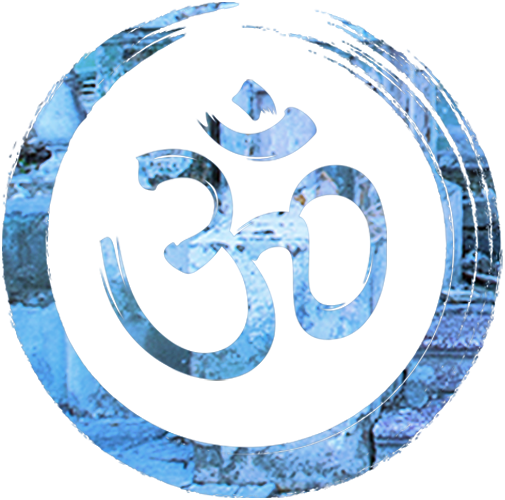
There are no expectations inside om. No beds to make, breakfast dishes to clean, bills to pay. It can expand into a personal universe and contract back into a syllable in a blink.
The spacious loving vibration without beginning or end, known as OM, offers us a space in which to find our individual home. It offers us refuge from our culture and shelter from our over-scheduled lives. It offers a safe haven from which to begin.
For me, the idea for how we can each find our individual home began with a story.
Our ego listens to facts. Our soul listens to stories, to poetry, to anything primal that offers real truth, that goes below the surface of what we can see to the underground treasure that is our true home.
The spacious loving vibration without beginning or end, known as OM, offers us a space in which to find our individual home. It offers us refuge from our culture and shelter from our over-scheduled lives. It offers a safe haven from which to begin.
For me, the idea for how we can each find our individual home began with a story.
Our ego listens to facts. Our soul listens to stories, to poetry, to anything primal that offers real truth, that goes below the surface of what we can see to the underground treasure that is our true home.
One morning, I walked into the kitchen. The graceful giraffe necks of three daffodils bent startlingly forward dipping their beautiful yellow faces onto the black granite countertop. Inches from the faucet, poised in their shallow, asymmetrical vase, they had drunk yesterday’s water and were now dehydrated, starving—lost I thought, due to my irresponsibility. I cried. I am fragile that way, distraught by the caring of things like bills and e-mail over the beauty of life.
I filled the vase with clear cool water, apologized, and dejected, guilty, and saddened, walked away. It was yet another failing, this time at the expense of a being that could not care for itself.
Half an hour later I passed by the kitchen, stopped, froze and returned. To my great and glorious surprise the necks stood proud and tall—shone their yellow gold heads triumphantly in the early morning sunlight. I smiled and cried again—out of joy, out of a deep gratitude for feeling forgiven, for the resilient nature of what is meant to carry on, to do so, despite all signs to the contrary.
I filled the vase with clear cool water, apologized, and dejected, guilty, and saddened, walked away. It was yet another failing, this time at the expense of a being that could not care for itself.
Half an hour later I passed by the kitchen, stopped, froze and returned. To my great and glorious surprise the necks stood proud and tall—shone their yellow gold heads triumphantly in the early morning sunlight. I smiled and cried again—out of joy, out of a deep gratitude for feeling forgiven, for the resilient nature of what is meant to carry on, to do so, despite all signs to the contrary.
It came to me then. We all need to be watered in order to survive.
We all wake up some mornings slumped over, desperate to be cared for, to be watered in exactly the way that will make US thrive. If nature’s water is made of two molecules hydrogen and one molecule oxygen, then what are the three components our spirits need to thrive?
Call it spirit, soul, inner life, mojo…the name doesn’t matter. You know what makes YOU come alive, feel fed, nourished, in the flow—what makes time slow down, your heart do cartwheels, what makes you NOT feel desperate for a cookie, a nap, a different house, what makes you feel watered—what makes you blossom.
You know. I know. We all know. But we are so inundated by the dramas of every day, so exhausted by the ten thousand details we must take care of, it is easier to leave ourselves off the list. Part of us just wishes we were plastic flowers. And the argument for plastic is strong.
Plastic is more reliable. It is the lower maintenance, easy-to-dust, longer-lasting alternative to real. You don’t have to remember to water, cut stems or care for it in any way. Finally one thing that doesn’t need you to do anything for it! And success is guaranteed or your emotional roller-coaster-of-a-life-back. For a little extra you can even buy the plastic water line so it looks more real. It’s just sooooo much easier.
Plastic is more reliable. It is the lower maintenance, easy-to-dust, longer-lasting alternative to real. You don’t have to remember to water, cut stems or care for it in any way. Finally one thing that doesn’t need you to do anything for it! And success is guaranteed or your emotional roller-coaster-of-a-life-back. For a little extra you can even buy the plastic water line so it looks more real. It’s just sooooo much easier.
Except, we die inside.
Living flowers remind us we need water. Remind us we are alive. We are not robots. Not to-do lists. We need to hydrate our souls, our hearts—hydrate that nub of something that makes us feel like there is meaning, there is a point—that we matter.
You can read through this part or for more insightful results do it as an exercise on paper. First, make a long list of what you love. Big and small. From humming to hang-gliding, from cows to country music. Leave nothing out. And add a few notes as to why you love it—what about that particular item makes you come alive. A lot of treasure is buried in the why.
Many of the whys will align. Make a list of these too. For example I love country music because it’s straightforward, honest and comes from the heart. And, craziest thing, I love cows for the same reason. So, that quality (though slightly long and compound) would be a contender for the three elements.
The guiding principles for whether these elements will constitute your H2O have to do with the defining properties of water. The qualities that make water crucial to our bodies, the earth and the world we live in are the same ones that make it crucial to our sense of home. Thus, it is a perfect metaphor and will help guide our decisions.
Many of the whys will align. Make a list of these too. For example I love country music because it’s straightforward, honest and comes from the heart. And, craziest thing, I love cows for the same reason. So, that quality (though slightly long and compound) would be a contender for the three elements.
The guiding principles for whether these elements will constitute your H2O have to do with the defining properties of water. The qualities that make water crucial to our bodies, the earth and the world we live in are the same ones that make it crucial to our sense of home. Thus, it is a perfect metaphor and will help guide our decisions.

Water is absolutely ESSENTIAL to life and is present in all organic compounds.
The elements of your H2O should be critical to your mindbodyspirit well-being. These elements can often be unexpected or related to but not exactly what you thought. Often it helps to know what they are by imaging what your world would look like without them.
For example I thought poetry was one for me, but if I imagine my world without it, I am sad but could find solace in essay or other forms of writing. However if the ability to see and make metaphors was taken, the color immediately drains from my world. I feel weak and confused as to how I could communicate. So metaphor is essential.
For example I thought poetry was one for me, but if I imagine my world without it, I am sad but could find solace in essay or other forms of writing. However if the ability to see and make metaphors was taken, the color immediately drains from my world. I feel weak and confused as to how I could communicate. So metaphor is essential.
Water is SOLVENT. It can dissolve anything. Sugar, salt, etc.
Your three elements should be crucial in helping you to dissolve anger, grief fear, etc. Making metaphors does this for me. Some people play guitar, care for animals, walk in nature.
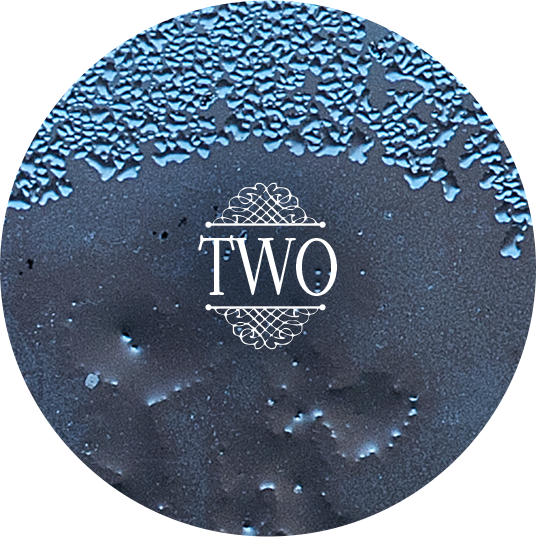
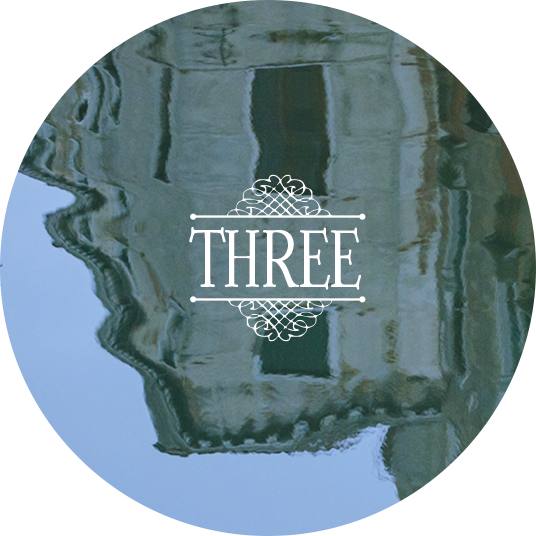
Water is TRANSFORMATIONAL. It can alter its state of being, can expand and contract and can take the shape of any container.
Your elements should have this same transformational quality. The same ability to take you from one state to another. For example, when you are low, what gives you energy? For me it’s running by myself at my own pace or having great meaningful conversations with people I love. Whatever it is should leave you feeling grateful to be alive.
What takes you from bored and scattered to excited and centered? It could be looking through travel books or doing a car restoration or baking the perfect banana bread. It should make you feel as happy after you do it, as it does while you are doing it. So power eating salted caramels doesn’t count.
What takes you from bored and scattered to excited and centered? It could be looking through travel books or doing a car restoration or baking the perfect banana bread. It should make you feel as happy after you do it, as it does while you are doing it. So power eating salted caramels doesn’t count.
Water is TRANSPARENT. In the electro-magnetic spectrum aquatic plants can survive because sunlight can reach them.
Your elements should not have layers you have to get through to feel good. They should not provide an obstacle course between you and your home. In this regard it helps to say what transparent is NOT.
It is not what numbs, sedates or dilutes your fear. So it’s not compulsive cleaning, martinis by the pitcher, hours on realtor.com or frenetic e-mail checking.
It’s not what you CAN do (organize everyone’s schedule, shuttle kids, multi-task, throw great parties). And it’s not what you SHOULD do (eat kale, get more exercise, stop biting your cuticles).
Transparent IS whatever allows you to mainline beauty and peace and love. Like water does for aquatic plants, you are looking for sunlight to reach your soul.
It is not what numbs, sedates or dilutes your fear. So it’s not compulsive cleaning, martinis by the pitcher, hours on realtor.com or frenetic e-mail checking.
It’s not what you CAN do (organize everyone’s schedule, shuttle kids, multi-task, throw great parties). And it’s not what you SHOULD do (eat kale, get more exercise, stop biting your cuticles).
Transparent IS whatever allows you to mainline beauty and peace and love. Like water does for aquatic plants, you are looking for sunlight to reach your soul.


Water has the ability to FLOW. If nothing is obstructing its path, water moves along in a steady or continuous stream.
Mihály Csíkszentmihályi proposed a similar kind of experiential flow in which people experience a steady ongoing positive state of consciousness where they feel enjoyment, creativity and total immersion in the activity they are doing.
So whatever your elements are, they should make you feel this sense of flow. They should engage you on such a deeply gratifying level that time disappears.
At this point we should have a short list of “things you love” and “reasons why” screened according to the five water properties.
So whatever your elements are, they should make you feel this sense of flow. They should engage you on such a deeply gratifying level that time disappears.
At this point we should have a short list of “things you love” and “reasons why” screened according to the five water properties.
The next step is to dive a little deeper. To make what you love YOURS. It crucial not just to say, I love BEING STILL, but to research what BEING STILL means to YOU until it is YOUR still, not just a still.
How do we dive deeper?
My favorite-by-far and most creatively vital therapist told me to do this in my late 20s when going home for the holidays always sent me spiraling into self-destructive behavior. He suggested I become an anthropologist and approach the holidays as a scientific study of my family observing the behaviors of this human group called the Coveny’s and how myself as an eldest daughter in the clan behaves when placed in the ritual called Christmas.
I use this same strategy now to become a detective of what is and what is not working in my life. The emotional distance offers a more objective analysis. And in addition to providing genuine insight, it also introduces the almighty opportunity for humor.
I use this same strategy now to become a detective of what is and what is not working in my life. The emotional distance offers a more objective analysis. And in addition to providing genuine insight, it also introduces the almighty opportunity for humor.
We can become anthropologists for all different facets of our life. This objective research-driven vantage point allows us to dive deeper into what really makes us feel most at home and should help prioritize our list in a different way.
Become an anthropologist of your home. Walk around. It’s fun really. Like going through a historical museum of who you’ve been, wanted to be, had to be, aspired to be, rebelled to be, tried on being—and once in a rare while—who you ARE.
If you look closely enough, you’ll be there
in a book, a picture, a knick-knack
the authentic you.
in a book, a picture, a knick-knack
the authentic you.
Sure you’ll have to wade through a lot of odd versions of yourself like the you who absolutely had to have the “all-in-one wrapping station complete with a life-time supply of invisible double-sided tape” and the you who bought the “nutrient enhancing steamer” because you were going to steam everything for the rest of your life.
Even when you feel like your real self has been abducted by aliens or replaced by some kind of malfunctioning robot, your home will offer you clues on how to get home.
So, look around. Find YOU in the details. Then study the DETAILS and you will learn about YOU—what you truly love and more importantly WHY. Because somewhere along the line, you’ve bought something that’s intrinsically, undeniably, absolutely, positively YOU.
Even when you feel like your real self has been abducted by aliens or replaced by some kind of malfunctioning robot, your home will offer you clues on how to get home.
So, look around. Find YOU in the details. Then study the DETAILS and you will learn about YOU—what you truly love and more importantly WHY. Because somewhere along the line, you’ve bought something that’s intrinsically, undeniably, absolutely, positively YOU.
Become an anthologist of your photo library. Are there ten thousand shots of seagulls? Car parts? Gourmet meals you’ve eaten at fancy NYC restaurants? African faces from the Maasai region? Gourds? Each detail describes, in order, my mother-in-law, husband, two friends and myself. Says a lot.
It’s kind of like you’re giving messages to yourself in case you forget. So, if I were to speak for the people above, their reason why might be: Seagulls give me a sense of freedom, of lightness. Freaky fall vegetables comfort me with their incredible uniqueness. Finely crafted meals feed my craving for the artistry and love food offers. African faces remind me of a more tribal, primal, essential way of living.
Become an anthologist of your music library. Is it filled with improvisational jazz, Bruce Springsteen Live? Obscure tracks by Dave Grohl? Everything Michael Jackson has ever done?
Or if you are a music hoarder and have everything that has ever been recorded, close your eyes and think about what, right now, you really want to listen to. What would make you feel connected, fulfilled, excited. Do the same on a few different days and in a few different moods.
Then ask yourself why. Why these musicians? Why this genre? Why this song? What do you like it about it? What does it make you feel? What does it remind you of? Why does this matter?
It’s kind of like you’re giving messages to yourself in case you forget. So, if I were to speak for the people above, their reason why might be: Seagulls give me a sense of freedom, of lightness. Freaky fall vegetables comfort me with their incredible uniqueness. Finely crafted meals feed my craving for the artistry and love food offers. African faces remind me of a more tribal, primal, essential way of living.
Become an anthologist of your music library. Is it filled with improvisational jazz, Bruce Springsteen Live? Obscure tracks by Dave Grohl? Everything Michael Jackson has ever done?
Or if you are a music hoarder and have everything that has ever been recorded, close your eyes and think about what, right now, you really want to listen to. What would make you feel connected, fulfilled, excited. Do the same on a few different days and in a few different moods.
Then ask yourself why. Why these musicians? Why this genre? Why this song? What do you like it about it? What does it make you feel? What does it remind you of? Why does this matter?
Become an anthologist of your closet. Is there a shrine to stiletto’s you don’t wear? Or god bless you, you do? Does your fleece call to you? Are you disappointed you don’t have more hiking boots or that you can’t wear your lace teddies out to parties? Is your underwear drawer color-coded or your floor littered with three days worth of outfits?
Do you have t-shirts from every college date, party or city you visited for the past decade? Or only the latest trends? Do you wear mostly neon or only black and white? Business suits or bohemian garb?
Do you have t-shirts from every college date, party or city you visited for the past decade? Or only the latest trends? Do you wear mostly neon or only black and white? Business suits or bohemian garb?
Why? Do you love simple? Crazy? Spontaneous? Ordered?
Where is the real YOU in your closet? Not the you you tried on but hated. Not the you you squeezed into for corporate America. Not the you you thought would be more interesting. YOU. The real you.
Become an anthropologist of your books. Walk past the books on ‘juicing for life,’ ‘yoga for the non-yogi’ and ‘I’m okay you’re not’…past all the books you feel guilty for not reading, reading ten pages of, or buying at all. Past the ones you hoped would make you feel smarter, more current or less predictable.
Become an anthropologist of your books. Walk past the books on ‘juicing for life,’ ‘yoga for the non-yogi’ and ‘I’m okay you’re not’…past all the books you feel guilty for not reading, reading ten pages of, or buying at all. Past the ones you hoped would make you feel smarter, more current or less predictable.
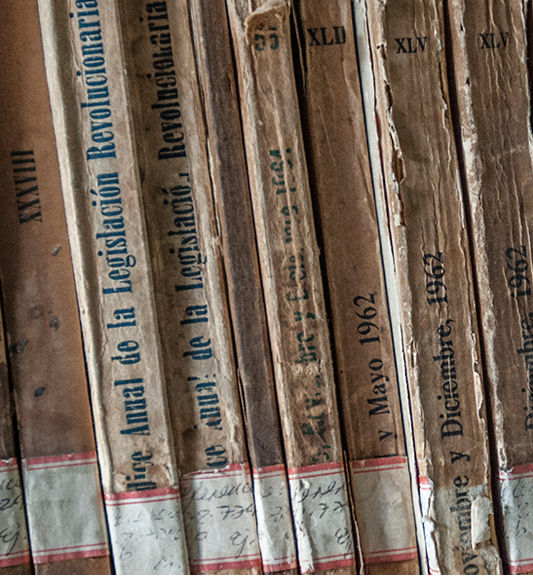
Find five books that remind you of YOU. The you you may have lost track of lately. The you that makes YOU happy to be alive. Makes you feel delighted, excited and grateful—more connected to yourself, this world and the hum of energy all around us.
Conduct an experiment with yourself and pick up only the books you’d be overjoyed at the prospect of reading again right now. Books that make you smile inside out.
Not that tense, no I’d really love to dive back into the noble truths of Buddhism or the mystical underpinnings of quantum physics. Not that smile. Rather, the one that makes your face soften, your shoulders drop and your BIG IMPORTANT PLAN slip far, far, away.
Finding THOSE five books is life saving. We all have so many books but not so many that light that spark inside, that make our spirit sing—that make the child within us BURST into dance.
Conduct an experiment with yourself and pick up only the books you’d be overjoyed at the prospect of reading again right now. Books that make you smile inside out.
Not that tense, no I’d really love to dive back into the noble truths of Buddhism or the mystical underpinnings of quantum physics. Not that smile. Rather, the one that makes your face soften, your shoulders drop and your BIG IMPORTANT PLAN slip far, far, away.
Finding THOSE five books is life saving. We all have so many books but not so many that light that spark inside, that make our spirit sing—that make the child within us BURST into dance.
The first book I picked up was “The Absolutely Essential Eloise,” by Kay Thompson. I am in love with Eloise. Always have been. Her portrait hangs beside our sons’ rooms. But she had become, somehow, like the wallpaper. There and not. Until this exploration helped me find her again. Why Eloise?
In “The Story of Eloise,” Marie Brenner says, “Eloise was our ticket out of a gray flannel society–Holden Caulfield for kindergarten girls. We marveled at her exotic life at the Plaza Hotel and bombarded our mothers with questions: Where were Eloise’s parents? How come she was so lucky to stay home from school? We wanted her life…Her Plaza was as magical as Oz and as exotic as the South Pacific. Eloise was a proto-feminist…She was an ancient child with the musical vocabulary of a poet. Her words would enter the language of Eisenhower’s America.”
I love Eloise because she is a feisty royal rebel. A prankster diva. A deliciously upside-down alternative heroine. She is precocious and wise—a creatively resilient abandoned child. Absurdity and imagination ruled her world. She could sklonk the kneecaps of Vincent the barber in one breath and order up petit dejeuner in the next. She skibbled and skiddered, took rawther long bawths and used a paper cup to telephone Mars. The flap copy announced her as “not yet pretty but already a Person. Henry James would want to study her. Queen Victoria would recognize her as an Equal.”
In “The Story of Eloise,” Marie Brenner says, “Eloise was our ticket out of a gray flannel society–Holden Caulfield for kindergarten girls. We marveled at her exotic life at the Plaza Hotel and bombarded our mothers with questions: Where were Eloise’s parents? How come she was so lucky to stay home from school? We wanted her life…Her Plaza was as magical as Oz and as exotic as the South Pacific. Eloise was a proto-feminist…She was an ancient child with the musical vocabulary of a poet. Her words would enter the language of Eisenhower’s America.”
I love Eloise because she is a feisty royal rebel. A prankster diva. A deliciously upside-down alternative heroine. She is precocious and wise—a creatively resilient abandoned child. Absurdity and imagination ruled her world. She could sklonk the kneecaps of Vincent the barber in one breath and order up petit dejeuner in the next. She skibbled and skiddered, took rawther long bawths and used a paper cup to telephone Mars. The flap copy announced her as “not yet pretty but already a Person. Henry James would want to study her. Queen Victoria would recognize her as an Equal.”
Kay Thompson, through Eloise, gave and gives me permission to explore terra incognita, unknown regions of the imagination. She declared boldly to me, authority, education… all those big important rules… is not the half of it, and really not even the point of it! She demanded fervently of me…be BOLD, be FUN, irreverent and absurd!! She heralded imagination as vital to my sense of confidence and happiness.
Precociously sophisticated does not pre-empt playful. The world is ripe for poetry, YOURS. She cared deeply for creatures that could not care for themselves—turtles, dog-cats, deformed dolls. She was light-hearted, fierce and wildly creative with love.
What she spoke to me of when I was little has grown deeper and more powerful with time and understanding.
What she spoke to me of when I was little has grown deeper and more powerful with time and understanding.
My second book was Brian Andreas’s “Hearing Voices.” He is quirky, unusual, poignant, hysterically funny and deeply observant of life. His tonality varies as much as the emotional landscape of any given day. His written voice helps me feel comforted and entertained by the craziness that is going on in my head all the time.
His stories are like free-range haikus. Like fireflies that light up the sometimes deep and other times absurd ridiculousness of our inner thoughts. He is not afraid to share the spectrum of feelings and thoughts from page to page.
They defy boxes. They inspire connection. He says, “Our wish is that other people experience this amazing world we live in as a world of imagination & possibility & healing. We believe our stories do that…We believe (fiercely) in the power of stories…because it is valuable & right to protect the precious connections between people. That’s who we are. We forget at times (isn’t it amazing how life sneaks up & steals your memory of who you want to be), but mainly, we remember.”
His stories are like free-range haikus. Like fireflies that light up the sometimes deep and other times absurd ridiculousness of our inner thoughts. He is not afraid to share the spectrum of feelings and thoughts from page to page.
They defy boxes. They inspire connection. He says, “Our wish is that other people experience this amazing world we live in as a world of imagination & possibility & healing. We believe our stories do that…We believe (fiercely) in the power of stories…because it is valuable & right to protect the precious connections between people. That’s who we are. We forget at times (isn’t it amazing how life sneaks up & steals your memory of who you want to be), but mainly, we remember.”
I first discovered his quirkily illustrated miniature story-poems on the coffee table of a rented ski house where we stayed. I was sick. My family was out skiing and right up until finding his autographed first edition books I was feeling very sorry myself. I am forever being reminded there are always reasons why things happen the way they do.
He reminds me that humor is born out of our inherent human weirdness. He reminds me that poetry does not have to be dressed in a petticoat or a coat of arms or a highbrow literary robe. He reminds that my crazy inner thoughts—my most deeply suppressed protected feelings and fears—those are actually my most interesting parts.
The third book is far from fun or glamorous, but for me, life-changing. It is rather dense, unforgiving and textbook like. But I have read it four times in the past few years and it keeps revealing my Self to myself so here it is: “The Presence Process,” by Michael Brown.
Per the title, the book is about being present. My life growing up and right up until five years ago, when my mother was diagnosed with terminal cancer, moved at 100mph. There was way too much to do to indulge the luxury of ‘being present.’
I looked outside to solve problems I had inside. I acted or reacted with speed instead of responding after contemplation. I addressed circumstances not the way they made me feel. He has helped me relook at core behaviors that didn’t serve me.
Per the title, the book is about being present. My life growing up and right up until five years ago, when my mother was diagnosed with terminal cancer, moved at 100mph. There was way too much to do to indulge the luxury of ‘being present.’
I looked outside to solve problems I had inside. I acted or reacted with speed instead of responding after contemplation. I addressed circumstances not the way they made me feel. He has helped me relook at core behaviors that didn’t serve me.
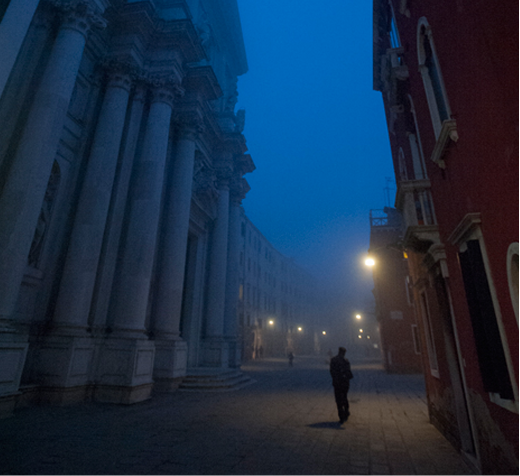
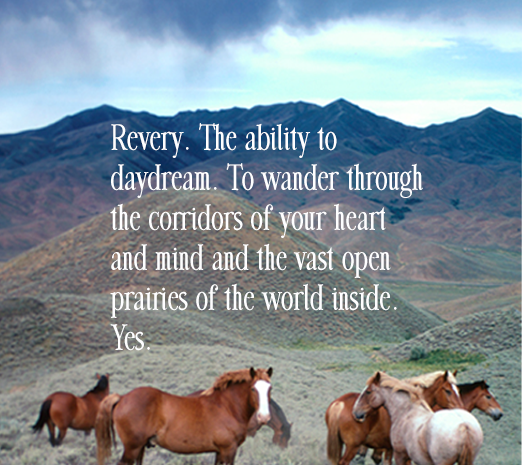
Emily Dickinson’s “Emily Dickinson,” was given to me by now deceased grandfather as a beloved token of the summer I spent with him when I was nine and he introduced me to poetry (which would save my life many times) through Emily Dickinson. Her writing has a way of continually re-introducing me to myself, a different self, often one I like better.
To make a prairie it takes one clover and a bee,
One clover, and one bee,
And reverie
The revery alone will do,
If bees are few.
To make a prairie it takes one clover and a bee,
One clover, and one bee,
And reverie
The revery alone will do,
If bees are few.
My fifth book is Barbara Hurd’s “Walking the Wrack Line, On Tidal Shifts and What Remains.” Her essays remind me of how I love metaphor and nature. How I love to give voice to what has none, to imagine the hidden lives inside everything.
“The book began on a beach,” Hurd says, ”with the realization that a lot of what I care about survives in spite of—perhaps because of—having been broken or lost for a while in backward drift. Picking up egg cases, stones, shells, I kept turning them over—in my hands and in my mind.”
Her essays feel like prose poems that employ the fascinating, complex details of nature to echo out the human condition. We are constantly shifting, changing, losing, breaking, growing. So too are the creatures and everything she finds that wash up on the wrack line. She gives voice to the invisible and uses metaphor to bring it to life. In so doing she honors what is unvoiced and buried in all of us.
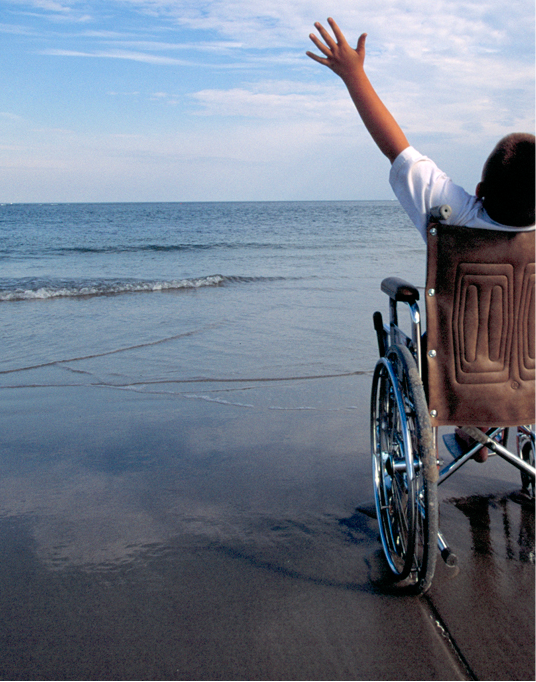
It is easy to see, how if we look deeply enough, out of even just five books come powerful themes about what it is that brings us to life.
Our selections should keep us nodding and yessing and smiling. They should make us ooooh and ohhhhh and ahhhhha. Regardless of what we choose to be an anthologist of, the real treasure is in discovering WHY each book, photo or song matter so much to us. Inside those answers are the clues as to what on our “list of things we love” rises to the top.
Our selections should keep us nodding and yessing and smiling. They should make us ooooh and ohhhhh and ahhhhha. Regardless of what we choose to be an anthologist of, the real treasure is in discovering WHY each book, photo or song matter so much to us. Inside those answers are the clues as to what on our “list of things we love” rises to the top.
Selecting the top three is an important part of the process because it forces us to create our individual hierarchy and taxonomy. Our list in its entirety is important but certain items on our list will fall into a subset of a higher order item. This is based entirely on individual choice.
For example, most people would place Metaphor under the higher order heading of Poetry. But for me, Poetry falls under Metaphor because Metaphor is what drives my love of poetry not the other way around. I find metaphor in gourds, in essays, in the color black, in water.
For example, most people would place Metaphor under the higher order heading of Poetry. But for me, Poetry falls under Metaphor because Metaphor is what drives my love of poetry not the other way around. I find metaphor in gourds, in essays, in the color black, in water.
No matter how bent over our daisy heads are, there is hope.



